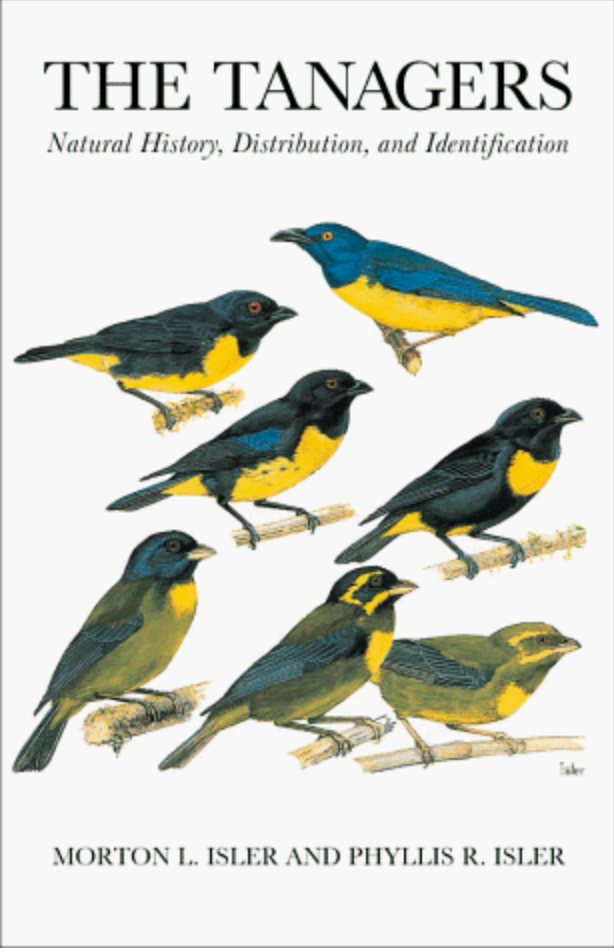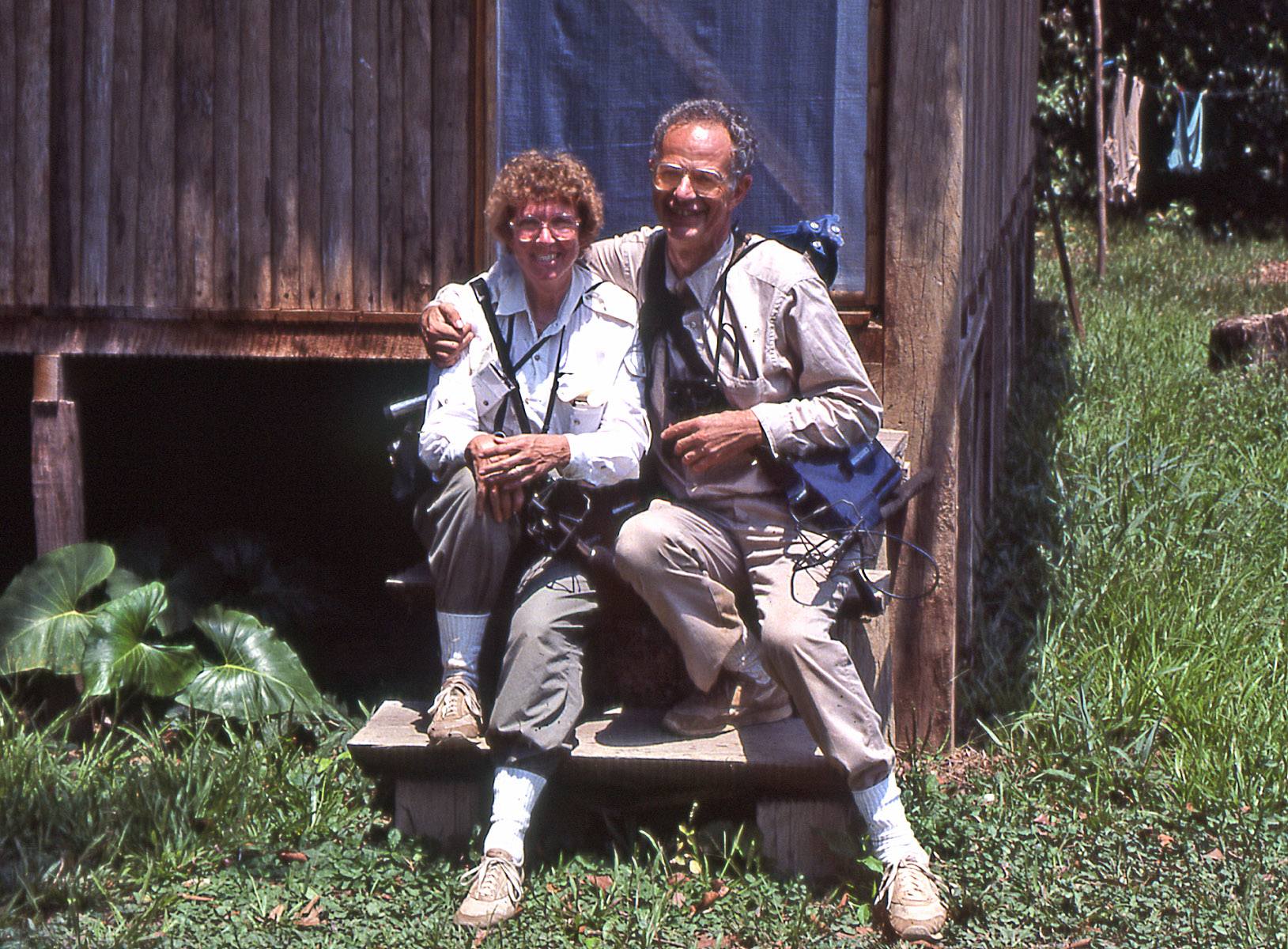The path to ornithology and sound recording came late in life for Mort and Phyllis Isler, but that has not stopped them from making significant contributions in the field.
In their late 40s and early 50s, after establishing successful careers in other fields Mort and Phyllis found themselves working alongside some of the most pre-eminent ornithologists of the time. Ted Parker, John O’Neill, and Van Remsen among others at Louisiana State University welcomed Mort and Phyllis as one of their own. Mort and Phyllis proceeded to soak up everything they could. “It was a continuous learning process,” said Mort.
Ted’s passion for sound recording was the spark that fueled both Phyllis and Mort to turn their hobby of watching birds into a mission for science.
They accompanied Ted and others on several expeditions to South America where their knowledge of tropical birds blossomed. Soon they became experts without even realizing it. Mort in his humble nature was quick to point out during our conversation that he doesn’t even have a degree in biology. But that has not prevented Mort from publishing more than 35 articles (17 of which Phyllis also co-authored) in scientific journals. Mort’s latest contribution—at 90 years-old no less—was published in 2020 with a team of international collaborators on the discovery that the Rufous Antpitta is not one but 16 separate species.
Mort Isler grew up watching birds, but as a child of the Great Depression his family pressured him to secure a high paying job; studying birds was not one of those jobs. Fortunately Mort never gave up on his dreams and he found ways to appreciate birds even while earning his bachelor’s of architecture degree at Rensselaer Polytechnic Institute and a master’s in city planning at Yale.
Throughout his career as an urban planner, Mort made several trips to South America venturing out early in the morning where colorful tanagers beckoned him. He started drawing and taking notes of what he saw to take back to the Smithsonian Institute in order to identify the birds, because back then there weren’t any field guides. His note taking and observational skills paved the way for his future career as an ornithologist, unbeknownst to him at the time.
Meanwhile back in New York, a young woman by the name of Phyllis Russell was working as a biophysicist. After the passing of her first husband, Phyllis joined her mother on a birding trip to Ecuador. On that fateful trip Phyllis not only learned about birding for the first time, she met Mort. They were married two years later in 1980.
Soon after they married, Mort retired and joined the Smithsonian Institute as a research associate and ornithology became his full-time job. Phyllis soon followed suit, eager to make ornithological contributions together. The year they joined the Smithsonian Mort and Phyllis started in earnest compiling literature and Mort’s old notes and recordings as well as his hand drawn illustrations of tanagers in South America to write the most authoritative book on tanagers in existence.

The tanager book was just the beginning. Mort and Phyllis morphed into full-fledged ornithologists and continued to study tropical bird vocalizations. With every trip Mort and Phyllis focused on getting more and more sound recordings to better understand how vocalizations can affect mate selection, speciation, and more.
“There are multiple things about recording bird sounds that are quite satisfying and wonderful,” says Phyllis. “Being in the jungle, especially when you are all by yourself, you become completely absorbed in the beauty, sounds, and smells all around you.”
Mort too discovered the joys of sound recording and not just the recording of songs. Mort says, “all types of vocalizations are needed to better understand not only mate selection but also in making recommendations for species status.” His plea to all sound recordists, “record every single vocalization type that you can.”
Phyllis and Mort continued to travel to South America and record bird songs and calls for as long as they could. “It was a sad day when my arthritis would no longer permit me to use the equipment I needed to continue this work,” said Phyllis. Mort wishes they could have made more recordings, but he says, “we were in our fifties when we really started recording, so we weren’t youngsters anymore and we had to quit recording when we were in our seventies.”
But that didn’t mean that Mort and Phyllis stopped working. Instead they turned toward analyzing recordings in the Macaulay Library to address questions related to the taxonomic status of antbirds, antwrens, and antpittas, resulting in the publication of more than 25 papers using recordings from the Macaulay Library. And for that, Mort says, “I’m very indebted to the Macaulay Library.”
Mort and Phyllis Isler’s story is a reminder that it’s never too late to follow your dreams. “If you love what you do and work hard with an open mind, you will no doubt be successful,” says Phyllis.


